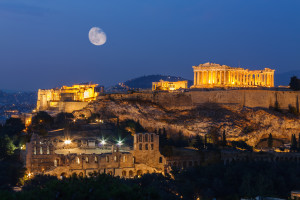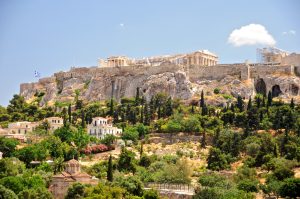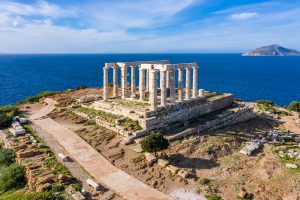Greecetours.com brings your dream to reality
- antonios seretis
- Athens multi island
Bring your dreams to reality with greecetours.com
ATHENS GREECE
Athens, the heart of ancient and modern Greece, is a city that pulsates with history, culture, and vibrant energy.
Steeped in mythology and adorned with architectural marvels, Athens offers a compelling blend of the past and the present.
Acropolis and Parthenon:
At the pinnacle of Athens stands the Acropolis, a UNESCO World Heritage site and the symbol of classical Greece.
The Parthenon, a masterpiece of ancient architecture dedicated to the goddess Athena, dominates the Acropolis and offers breathtaking views of the city below.

The Acropolis Museum in Athens is a prominent cultural institution that opened its doors to the public on June 20, 2009.
Designed by architect Bernard Tschumi, the museum is situated at the foot of the Acropolis and aims to showcase the history and treasures of this ancient site. Here are some key features of the Acropolis Museum:
Architectural Marvel:
The museum’s architecture is notable for its modern design and use of glass, allowing natural light to illuminate the exhibits.
The layout is carefully planned to mirror the dimensions and orientation of the Parthenon, providing a seamless connection to the ancient structure.
Display of Artefacts:
The Acropolis Museum is home to an extensive collection of artefacts discovered on the Acropolis and its surrounding slopes.
These artefacts date from the Greek Bronze Age to Roman and Byzantine Greece.
The museum’s focus is on the Parthenon sculptures, including the famous friezes and metopes.
1.3. Parthenon Gallery:
One of the highlights is the Parthenon Gallery, which is designed to replicate the dimensions of the Parthenon itself.
This space displays the original marble from the Parthenon frieze, metopes, and pediments, providing a comprehensive view of the temple’s artistic and historical significance.
Archaic Gallery:
The Archaic Gallery features sculptures and artefacts from the Archaic period, showcasing the evolution of Greek art and craftsmanship.
Acropolis Slopes Excavation:
The museum is built above an extensive archaeological site. Glass floors in some sections allow visitors to view the ongoing excavations beneath the museum, providing a unique perspective on the layers of history.
Modern Facilities:
The Acropolis Museum incorporates modern amenities, including educational programs, a restaurant with panoramic views, and a gift shop. The museum also hosts temporary exhibitions and cultural events.
Cultural Significance:
The Acropolis Museum plays a crucial role in the ongoing discussions about the return of the Parthenon Marbles (Elgin Marbles) from the British Museum in London.
The museum serves as a focal point for advocating the reunification of these ancient sculptures.
If you plan to visit the Acropolis Museum, it’s advisable to check the official website for the latest information on opening hours, exhibitions, and any potential updates.
Plaka District:
The charming Plaka district, nestled at the foot of the Acropolis, is a maze of narrow streets lined with neoclassical buildings, traditional tavernas, and shops.
It’s an ideal place to wander, shop for souvenirs, and savour authentic Greek cuisine.
Ancient Agora:
The Ancient Agora, a marketplace in ancient Athens, is a fascinating archaeological site that provides insight into daily life during antiquity.
The Temple of Hephaestus, the best-preserved ancient Greek temple, stands proudly in this historical hub.

National Archaeological Museum:
For those seeking a deeper understanding of Greece’s rich history, the National Archaeological Museum is a treasure trove.
It houses an extensive collection of artefacts, including sculptures, pottery, and jewellery from various periods.
Syntagma Square and Changing of the Guard:
Syntagma Square is the central hub of Athens, surrounded by important buildings such as the Greek Parliament.
Witness the ceremonial Changing of the Guard at the Tomb of the Unknown Soldier, a spectacle known for its elaborate uniforms and precise movements.
Mount Lycabettus:
For panoramic views of Athens, ascend Mount Lycabettus. Whether reached by a hike or a funicular ride, the summit offers a breathtaking perspective of the cityscape, especially during sunset.
National Garden of Athens: Escape the urban hustle in the National Garden, an oasis of greenery in the heart of Athens.
Stroll through landscaped gardens, visit the small zoo, and unwind in the serene surroundings.
Athens, with its blend of ancient wonders and contemporary delights, invites travellers to immerse themselves in a living canvas of history and culture
Athens is a city rich in history and culture, offering numerous attractions and places to explore. Here are more places to visit in Athens:
Temple of Olympian Zeus:
Marvel at the colossal Temple of Olympian Zeus, once the largest temple in Greece. The surviving columns and ruins provide a glimpse into the grandeur of ancient Athens.
Benaki Museum:
The Benaki Museum showcases an extensive collection of Greek art and artefacts, spanning from prehistoric times to the modern era. It offers a comprehensive view of the country’s cultural evolution.
Byzantine and Christian Museum:
Delve into the Byzantine era at the Byzantine and Christian Museum, which houses an impressive collection of religious artefacts, icons, and artworks from the Byzantine period.
National Museum of Contemporary Art (EMST):
For those interested in modern art, the National Museum of Contemporary Art (EMST) is a must-visit. Located in the former Fix brewery, it features contemporary Greek and international artworks.
Panathenaic Stadium: Step into history at the Panathenaic Stadium, the only stadium in the world built entirely of marble.
It hosted the first modern Olympic Games in 1896 and offers a unique experience for sports and history enthusiasts.
Monastiraki Square and Flea Market:
Explore the vibrant Monastiraki Square and its bustling flea market, where you can shop for antiques, jewellery, traditional crafts, and souvenirs. The area also offers a lively atmosphere and numerous cafes.
National Historical Museum: Located in the Old Parliament Building, the National Historical Museum showcases the history of modern Greece, featuring artefacts, documents, and exhibits related to the country’s struggle for independence.
Kerameikos Archaeological Site:
Visit the Kerameikos Archaeological Site, an ancient cemetery and part of the city’s fortifications. The site includes impressive funerary monuments and a museum displaying artefacts from the area.
Stavros Niarchos Foundation Cultural Center:
Experience the Stavros Niarchos Foundation Cultural Center, a modern complex housing the National Library of Greece and the Greek National Opera. The landscaped park surrounding the centre is perfect for a stroll.
Museum of Cycladic Art:
Dive into the art of the Cyclades at the Museum of Cycladic Art, featuring a superb collection of ancient Greek artefacts, particularly focusing on the Cycladic islands’ art and culture.
These additional attractions offer a diverse range of experiences, allowing visitors to explore Athens’ historical, artistic, and contemporary facets.
“Athens Riviera” typically refers to the coastal area of Athens, Greece, extending from the southern suburbs of the city down to the Sounion Peninsula.
This region is known for its beautiful beaches, seaside resorts, marinas, and vibrant nightlife. The Athens Riviera offers a contrast to the historical and cultural attractions of the city centre, providing a more laid-back atmosphere by the Aegean Sea.
Key Highlights of the Athens Riviera:
Beaches: The Athens Riviera is dotted with several beaches, each with its charm. Popular beaches include Glyfada Beach, Vouliagmeni Beach, and Varkiza Beach.
These areas offer opportunities for sunbathing, swimming, and various water sports.
Glyfada:
Glyfada is a coastal suburb known for its upscale atmosphere, shopping districts, and vibrant nightlife. The area has numerous cafes, restaurants, and bars along the waterfront, making it a popular destination for both locals and tourists.
Vouliagmeni:
Vouliagmeni is famous for its natural spa lake, Lake Vouliagmeni, which is fed by underground currents and maintains a constant temperature.
The area also has upscale resorts, seaside restaurants, and a picturesque marina.
Varkiza:
Varkiza offers a family-friendly environment with a sandy beach, clear waters, and a variety of seaside tavernas. It’s a popular spot for locals to enjoy a day by the sea.
Cape Sounion:
Further down the Athens Riviera, Cape Sounion is home to the ancient Temple of Poseidon.
Perched on a promontory, the temple provides stunning views of the Aegean Sea and is particularly famous for its sunset vistas.

Marinas:
The Athens Riviera features several marinas, including the Flisvos Marina and the Alimos Marina, where visitors can find luxury yachts, cafes, and restaurants.
Nightlife:
While the nightlife in the Athens Riviera is generally more relaxed than in the city centre, there are still plenty of beach bars and clubs where you can enjoy a lively atmosphere in the evening.
